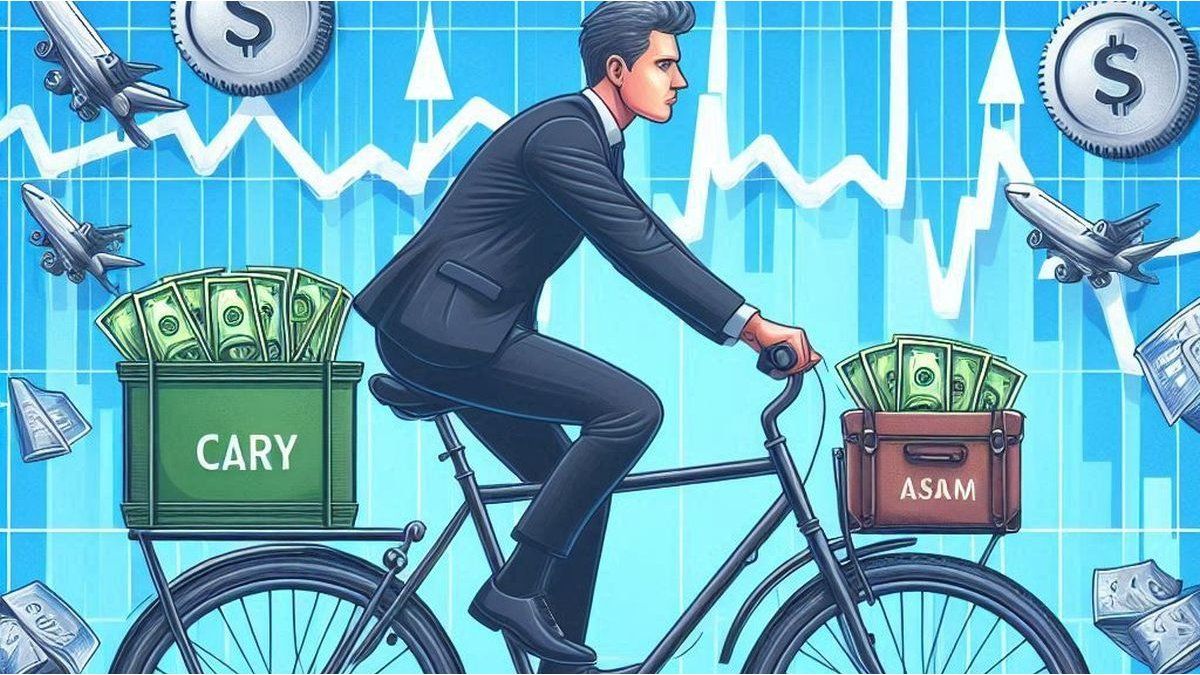A well-known analyst from a city broker commented to Scope It seems that it is time to buy the MEP dollar to dollarize the portfolios and take advantage of the low price that, by the way, seems to have found its floor near $1,150. He also warns about the wear and tear of the “carry trade”, as it is limited in the short term.
Leonardo Chialvadirector of Delphos Investmentsexplains in statements to this medium that The classic “carry trade” is based on taking advantage of very high real interest rates. However, at this moment, there is no positive real return in the Argentine market. What really happened was a significant drop in the parallel dollar, which was overvalued. “It is nothing more than taking advantage of this abrupt fall in the dollar, more than a strategy based on high real interest rates,” he indicates.
And he adds that what happened in the last two months “It was not a classic ‘carry trade’, but a ‘currency trade’, where the investor sells dollars, converts them to pesos and earns 25% just from the fall of the dollar“, he warns. “If you also invest at the rate, you obtained an additional 5% and generate a total of 30% (25% for the dollar and 5% for the rate),” concludes Chialva.
CER or CER: doubts about inflation
Diego Martínez Burzacocountry manager of Inviu Argentinaexplains to this medium that, in effect, he does observe an increase in the presence of CER-adjusted securities, especially those with medium-term maturities, such as those that mature in 2025. According to him, this is due to the fact that monthly inflation 3% seems to be established as a floorwhich generates greater demand for this type of instruments.
And he adds that, in addition, in the last tender for CER titles, a slight increase was noted in the interest rate of some Letters capitalizable in pesos (Lecaps), “which could indicate the Government’s intention to withdraw more pesos from the market to force inflation down,” says the strategist.
About the strategy of “carry trade” Martínez Burzaco warns of “high risks.” And explains that, with the dollar at low levels, “selling currencies to obtain returns in pesos implies an increasingly higher cost, since there is a risk that an unexpected event will cause the dollar to rise, reversing its downward trend and complicating that strategy“.
For this reason, he maintains that some investors who carried out “carry trades” in previous weeks or months are beginning to consider the possibility of reversing that position, “moving your investments to dollarized assets“. At the same time, those who are already positioned in dollars show little interest in selling at current prices to carry out “carry trade” in pesos.
The investment advisor, Gaston Lentini slips that the estimates of the Survey of Market Expectations (REM) project inflation of between 3.4% and 3.5% by the end of the year, but there are lack of increases in key services that could raise it. Although inflation close to 2% monthly could make sense with the moderate devaluation expected by the Government, “pending adjustments in relative prices still persist, which makes assets in pesos adjusted by CER attractive“, he indicates. The strategist maintains a cautious stance against the “carry trade” because he points out that it is “speculative” and prioritizes “dollarizing the portfolios, since he considers that one MEP dollar at $1,150 pesos is not expensive.”
Boncaps and Lecaps over the carry trade
Santiago Lopez Alfaropresident of Securities Patentproposes another strategy and shows an inclination for fixed rates over CER bonds, “although the latter are relatively cheap“. Mentions the new Boncap as of December 2025 “which offers a rate of 3.9% monthly (equivalent to a TNA of 60%). For the strategist, inflation will subside, so by positioning a fixed rate for 12 months or more at 3.9%, “there will be a good investment opportunity, since we project inflation close to 1% or even lower within that period”.
López Alfaro slips that the “carry trade”It is a complicated issue, since, in general, it refers to external investors who take advantage of local rates and then leave again“However, he comments that he does not have a record of many foreign investors entering the country. What he does observe”It is a genuine interest of local investors“Therefore, he estimates that, eventually, both the fiscal and monetary anchors will help stabilize and unify the situation, “which will allow a decrease in inflation, although for now it will be a slow process“.
An example of this is that today, the Lecap curve should be inverted, that is, long-term bills should yield less than short-term ones, “but right now it’s flat“. Therefore, for López Alfaro, “The best investment in pesos is the long-term LECAP and the new Boncap“. And he warns that although there is always the risk of an exchange rate jump or a “scare” in the market, we do not see a significant danger that could disarm this strategy.
Lecaps.jpeg
Lecaps curve. Source: Econviews.
And he launches one more: “Since Securities Patent we also do not observe a large inflow of international funds in this contextsince many external investors, including those who entered during the government of (Mauricio) Macri, have not yet returned.” Thus, the recent rise in sovereign bonds is driven mainly by local investors. Therefore, López Alfaro does not anticipate a significant drop in sovereign credits nor an abrupt end to this investment strategy.
Finally, Juan Alragroup portfolio manager TPCG/Consultatio, assures that a scenario of stabilization of inflation is strictly foreseen, and the indicators seem to point in that direction. Therefore, Lecaps remain a solid option. The analyst “does not perceive that a genuine dollarization of portfolios is occurring, but rather a demand for the MEP driven by money laundering.” And he adds. “dollar assets (Dollar Linked) do not flinch, and dollar futures show no signs of nervousness“.
Thus, while inflation seems to be resisting at the 3% floor, there are several challenges that could hinder the extension of this trend. Investors choose to take advantage the cheap MEP and dollarize their portfolioswhile others prefer to hold positions in CER-adjusted assets, due to inflationary expectations and pending price adjustments.
Source: Ambito
I am an author and journalist who has worked in the entertainment industry for over a decade. I currently work as a news editor at a major news website, and my focus is on covering the latest trends in entertainment. I also write occasional pieces for other outlets, and have authored two books about the entertainment industry.




